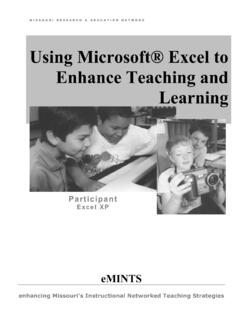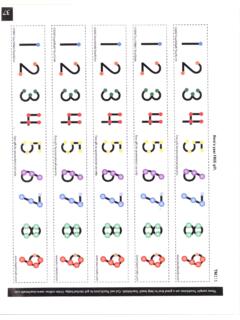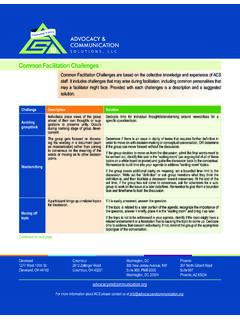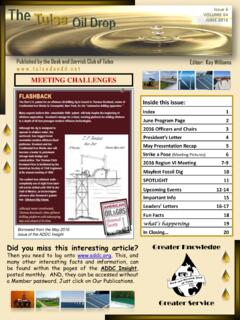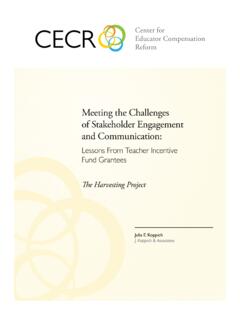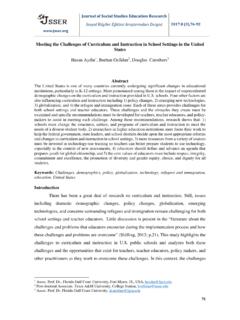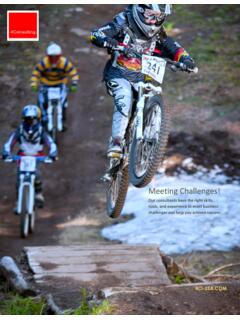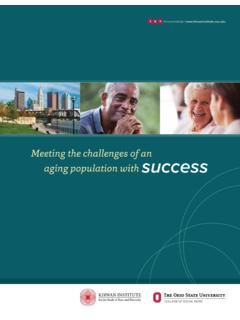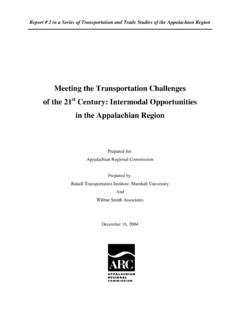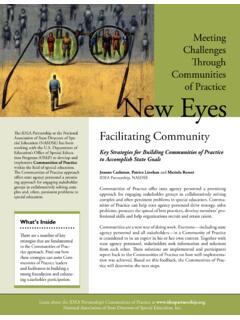Transcription of Unit 1 Topic: Meeting Challenges: What kinds of challenges ...
1 GTPS Curriculum English Language Arts Grade 5 Page 1 of 15 Unit 1 6 weeks (Sept. to third week of Oct.) Topic: Meeting challenges : what kinds of challenges do people face and how do they meet them? New Jersey Student Learning Standards Reading Lit Key Ideas and Details Quote accurately from a text when explaining what the text says explicitly and when drawing inferences from the text. Determine a theme of a story, drama, or poem from details in the text, including how characters in a story or drama respond to challenges or how the speaker in a poem reflects upon a topic; summarize the text. Compare and contrast two or more characters, settings, or events in a story or drama, drawing on specific details in the text ( , how characters interact).
2 Craft and Structure Determine the meaning of words and phrases as they are used in a text, including figurative language such as metaphors and similes. Describe how a narrator s or speaker s point of view influences how events are described. Integration of Knowledge and Ideas Analyze how visual and multimedia elements contribute to the meaning, tone, or beauty of a text ( , graphic novel, multimedia presentation of fiction, folktale, myth, poem). Range of Reading and Complexity of Text By the end of the year, read and comprehend literature, including stories, dramas, and poetry, at the high end of the grades 4 5 text complexity band independently and proficiently. Reading Informational Key Ideas and Details Quote accurately from a text when explaining what the text says explicitly and when drawing inferences from the text.
3 Explain the relationships or interactions between two or more individuals, events, ideas, or concepts in a historical, scientific, or technical text based on specific information in the text. Craft and Structure Determine the meaning of general academic and domain-specific words and phrases in a text relevant to a grade 5 topic or subject area. Compare and contrast the overall structure ( , chronology, comparison, cause/effect, problem/solution) of events, ideas, concepts, or information in two or more texts. Analyze multiple accounts of the same event or topic, noting important similarities and differences in the point of view they represent. Integration of Knowledge and Ideas Draw on information from multiple print or digital sources, demonstrating the ability to locate an answer to a question quickly or to solve a problem efficiently.
4 Range of Reading and Level of Text Complexity By the end of the year, read and comprehend informational texts, including history/social studies, science, and technical texts, at the high end of the grades 4 5 text complexity band independently and proficiently. Fundamentals Phonics and Word Recognition Know and apply grade-level phonics and word analysis skills in decoding words. Read with sufficient accuracy and fluency to support comprehension. xx4b. Read grade-level text with purpose and understanding. GTPS Curriculum English Language Arts Grade 5 Page 2 of 15 Language Conventions of Standard English Demonstrate command of the conventions of standard English grammar and usage when writing or speaking. 4c. Use verb tense to convey various times, sequences, states, and conditions.
5 Demonstrate command of the conventions of standard English capitalization, punctuation, and spelling when writing. 2e. Spell grade-appropriate words correctly, consulting references as needed. Knowledge of Language Use knowledge of language and its conventions when writing, speaking, reading, or listening. Vocabulary Acquisition and Use Determine or clarify the meaning of unknown and multiple-meaning words and phrases based on grade 5 reading and content, choosing flexibly from a range of strategies. xxx4a. Use context ( , cause/effect relationships and comparisons in text) as a clue to the meaning of a word or phrase. X4b. Common, grade-appropriate Greek and Latin affixes and roots as clues to the meaning of a word ( , photograph, photosynthesis).
6 4c. Consult reference materials ( , dictionaries, glossaries, thesauruses), both print and digital, to find the pronunciation and determine or clarify the precise meaning of key words and phrases. Demonstrate understanding of figurative language, word relationships, and nuances in word meanings. 5b. Recognize and explain the meaning of common idioms, adages, and proverbs. 5c. Use the relationship between particular words ( , synonyms, antonyms, homographs) to better understand each of the words. Acquire and use accurately grade-appropriate general academic and domain-specific words and phrases, including those that signal contrast, addition, and other logical relationships ( , however, although, nevertheless, similarly, moreover, in addition). Speaking and Listening Comprehension and Collaboration Engage effectively in a range of collaborative discussions (one-on-one, in groups, and teacher-led) with diverse partners on grade 5 topics and texts, building on others ideas and expressing their own clearly.
7 1a. Come to discussions prepared, having read or studied required material; explicitly draw on that preparation and other information known about the topic to explore ideas under discussion. Summarize a written text read aloud or information presented in diverse media and formats, including visually, quantitatively, and orally. Summarize the points a speaker makes and explain how each claim is supported by reasons and evidence. Presentation of Knowledge and Ideas Report on a topic or text or present an opinion, sequencing ideas logically and using appropriate facts and relevant, descriptive details to support main ideas or themes; speak clearly at an understandable pace. Writing Write informative/explanatory texts to examine a topic and convey ideas and information clearly.
8 Xxx2a. Introduce a topic clearly, provide a general observation and focus, and group related information logically; include formatting ( , headings), illustrations, and multimedia when useful to aiding comprehension. the topic with facts, definitions, concrete details, quotations, or other information and examples related to the topic. Write narratives to develop real or imagined experiences or events using effective technique, descriptive details, and clear event sequences. 3a. Orient the reader by establishing a situation and introducing a narrator and/or characters; organize an event sequence that unfolds naturally. 3b. Use narrative techniques, such as dialogue, description, and pacing, to develop experiences and events or show the responses of characters to situations.
9 3d. Use concrete words and phrases and sensory details to convey experiences and events precisely. Production and Distribution of Writing Produce clear and coherent writing in which the development and organization are appropriate to task, purpose, and audience. With guidance and support from peers and adults, develop and strengthen writing as needed by planning, revising, editing, rewriting, or trying a new approach. GTPS Curriculum English Language Arts Grade 5 Page 3 of 15 With some guidance and support from adults, use technology, including the Internet, to produce and publish writing as well as to interact and collaborate with others; demonstrate sufficient command of keyboarding skills to type a minimum of two pages in a single sitting.
10 Research to Build and Present Knowledge Conduct short research projects that use several sources to build knowledge through investigation of different aspects of a topic. Recall relevant information from experiences or gather relevant information from print and digital sources; summarize or paraphrase information in notes and finished work, and provide a list of sources. Range of Writing Write routinely over extended time frames (time for research, reflection, and revision) and shorter time frames (a single sitting or a day or two) for a range of discipline-specific tasks, purposes, and audiences. Essential Questions what makes people want to do the right thing? Week 1-At the Beach-Realistic fiction. The Eagle and the is honesty important? Week 2- Hold the Flag High-Literary Nonfiction.


